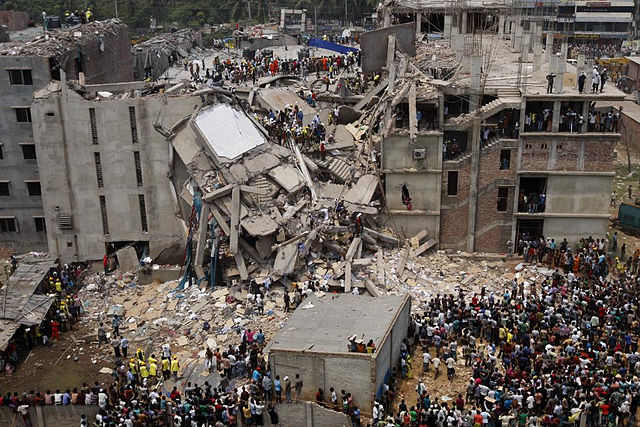You are currently browsing the tag archive for the ‘Rana Plaza’ tag.
The Garment Supply Chain Governance Project, which ended in June 2019, has recently published its final stakeholder report. After three years of collecting data from 79 lead firms from four countries, 152 factory managers in Bangladesh, 1.500 Bangladeshi garment workers and multiple stakeholders, we see a relatively coherent picture more than six years after the fatal Rana Plaza factory collapse: “Rana Plaza and the resulting public attention to building safety and worker standards in global garment supply chains has led to an enhanced climate for compliance, manifested in a range of new governance models – most importantly the Accord and Alliance initiatives – and more longer-term, stable buyer-supplier relationships that have contributed to improved worker outcomes in some respects. These developments are direct responses to an unprecedented human disaster in the global garment industry which has triggered a positive collective response but not a systemic change towards more sustainable garment production. In fact, our results indicate the fragility of these gains, shedding light on the continued systemic challenges to sustainable labour standards faced by lead firms and suppliers alike.”
These results echo previous findings, not least those reported on this blog, regarding the continued challenge of raising the wages of garment workers and the need for further stakeholder pressure on garment brands and policy makers. In addition, our results provide nuanced insights regarding the current state of buyer-supplier relations and working conditions. For instance, we observe a form of “asymmetrical cooperation” between buyers and suppliers that is marked by increased power asymmetries between lead firms and suppliers on the one hand, but longer-term relations, mutual understanding, trust and continuity of orders on the other. The main problem in these relationships is the continued pressure on production prices, which undermines suppliers’ capacities for improving labor standards. Rather than sweatshops, we argue that many of the larger garment factories in Bangladesh constitute “hardship workplaces”, maked by improvements in workers’ outcome standards
(mainly better health and safety conditions, relative job security and improved social benefits) and process rights (mainly representation in worker participation committees), but continued problems regarding wages, working hours, abuse and management rejection of unions and collective bargaining.
Many of these developments can be tied to the Accord and Alliance initiatives whose presence has clearly created a stricter “climate for compliance” that ensures that basic standards are met. Yet, these initiatives have also further consolidated lead firms’ power and has mixed impacts at best for local labor actors. Overall, we fear that with the fading out or transitioning of these initiatives and a continued lack of stricter regulation of labor standards and human rights in global supply chains – on national and transnational levels – the improvements garment workers gained might be instable. Thus, we conclude: “As Rana Plaza starkly revealed, the safety and wellbeing of millions of workers and their families depend on the development of effective governance
solutions on multiple levels. Our research indicates that despite the progress made in recent years, further efforts will be necessary to help the millions of workers who depend on the garment industry for their livelihoods.”



